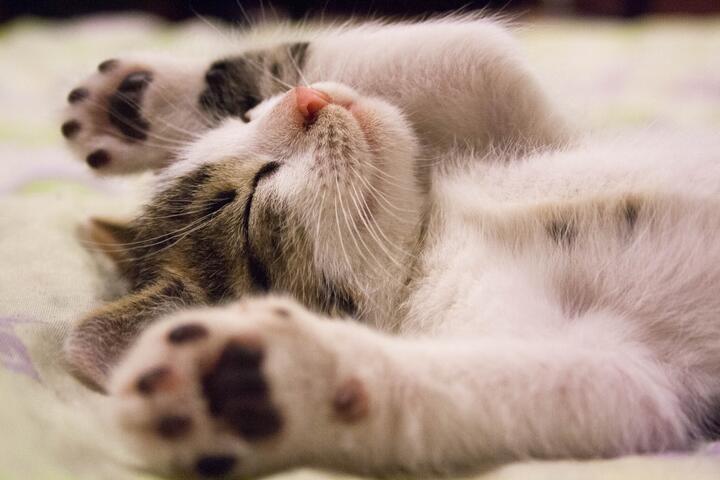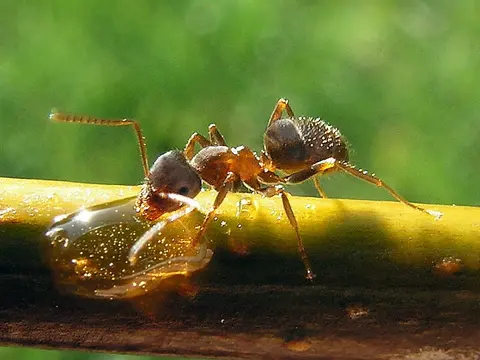How Much Cat Litter Should I Use?
Nolan FosterProper organization of the toilet is a mandatory aspect of life and education of a city cat, which is unable to go outside to cope with the need. One of the easiest ways to ensure the comfort of a pet in these cases is to install a special tray with a litter in it. We have already told about the choice of quality and a convenient tray, which means that now it is time to pay attention to the second question: how to use cat litter.
Why do I need cat litter at all?
 Photo by Pixabay on pexels
Photo by Pixabay on pexelsOur grandmothers did not even think about the need to buy specialized cat litter and used what is on the farm: old newspapers, sawdust, and sand. Such a folk method would not be so popular if it was not effective, but compared to modern special granules, it still loses out.
Paper and sand absorb moisture well but absolutely can not cope with the smell. Only sawdust can fight it, but they also have their disadvantages: because of its lightweight, they cling to the wool and are spread throughout the apartment. In this regard, we can fairly say that the ready-made artificial cat litter is much more practical, and it is much more convenient to use.
How much litter should I pour into the cat tray?
The answer to this question depends directly on whether you use a cat tray: simple or with a cat grate.
In the first case, the granules are poured on the bottom of the tray, that is, the cat stands with its paws right on them. The amount directly depends on your free time and desire to clean. If you pour the litter too thin, barely covering the bottom, it will get dirty quickly enough and will require complete replacement and thorough cleaning of the container. If you overdo it, the cat will throw pellets when buried, adding to your work while cleaning the apartment. The approximate “ideal” thickness is 1.5-2 cm depending on the height of the edge.
If there is a grating in the tray, which protects the cat’s feet from direct contact with the loose mass, the question of its quantity is solved by itself – the litter should fill almost all the space under it. This will allow us to prolong the interval between cleanings.
How to clean after the cat?
Two things will help you in this matter:
•a specialized perforated scoop, which is obligatory for any cat owner,
•optional packages for the tray.
The trowel should be used to remove wet, sticky litter, and solid excreta. This should be done regularly, as soon as your pet has done his job. The fact is that all cats are very clean and are very likely to refuse to go to the “dirty” toilet. The perforation in the trowel will help sift through the clean granules, thus saving the litter.
Tray bags are used as bedding so that the plastic base itself does not have to be washed. This is quite convenient, but only if a tray with a frame or grate is used. The edges of the bag are clamped between it and the base, so it does not knock down or tear when used. In other cases, the cat will likely tear the bag when buried.
How often should I do a full cleaning?
Here, everything depends on the type and quality of litter used: some do a better job of absorbing and holding the smell, while others do worse. Most manufacturers also give recommendations right on the packages, but we recommend just to keep the tray clean: as soon as you smell a slight smell or notice that the litter after regular cleaning with a scoop is too little for comfortable use, you can make a full replacement with a wash container and scoop.
How do I dispose of the litter?
 Photo by EVG Kowalievska on pexels
Photo by EVG Kowalievska on pexelsThe last important aspect of cat litter used is its disposal. The principle of cleaning for regular removal of used mass and residues with full tray washing is general and depends on the type of cat litter used.
Litters can be:
•absorbent – the simplest example – wood, which falls apart when wet,
•lumpy – consist of small pieces of clay or synthetic material, when wet, they are glued together.
Lumpy species should be disposed of only in a bag together with other household waste. You should not wash the toilet bowl as you can do with absorbent ones. Because of their ability to stick together, they can cause serious clogging of sewage pipes. If in doubt, check the information on the package. Quality litters are always accompanied by instructions for disposal.
As you can see, cat litter is very easy to use, especially if you take care of all the associated “tools” and a handy litter tray.
The general rule for how much cat litter to use is about three to four inches. This is just the right amount for your cat to cover its box and be able to dig in it. You don’t want the box to be too deep or it will be too slippery for your cat to use. You’ll also want to be sure to provide enough litter for your cat to urinate. However, you should also be sure to monitor your cat’s behavior and notice any changes.
Most cat parents end up using too much litter for their cats. The amount of cat litter should be two to three inches. However, many of us do not have a ruler handy when we’re filling the box, so we end up with a box filled with too much litter. That way, our poor furry friend slides around in it and doesn’t use the box very often. This is a big mistake, and it could cause your kitty to urinate and defecate in the wrong location.
Depending on the number of cats in your home, you may need more or less cat litter than what’s recommended. A single cat’s litter box should be approximately three inches deep. Multiple cats need three boxes. Generally, you will need one box for each cat, but if you have more than one, you may want to have more than one. Putting the litter box in a convenient place will encourage your cat to go and urinate in it. This is not the end of your quest for an ideal feline house, though.
If you’re not sure how much cat litter your cat needs, don’t worry! Most manufacturers recommend two to three inches, although some cats need up to four inches. It’s important to keep an eye on your feline’s health and don’t forget to consult your veterinarian for more guidance. If you’re not sure, you can always adjust the amount. Once you’ve filled your cat’s litter box, level it with a spatula.
Depending on your cat’s age and size, you should have three to six inches of cat litter in their litter box. In addition to this, you should also consider the type of litter. Smaller cats usually need seven to nine pounds of the stuff per week, while large cats can require up to forty pounds per month. Whether you have a single or multiple cats, they will need different amounts of cat food.
If you have more than one cat, you should add two to three inches of litter per cat. Adding more litter will only make your cat urinate more than twice as much, so be sure to avoid this in case of a large cat. Similarly, if you have multiple cats, use more clay cat litter if it’s deeper than three inches. It’s better to choose unscented clumping litter if you’re using clay, as it won’t clog the pan and won’t be as messy.
Depending on the size of your cat, you’ll need at least three inches of litter in the litter box. For a single cat, this will be enough to keep it clean and free of odors. For multiple cats, it’s best to use a little more than that. This isn’t enough because your cat will urinate on it more often than you’d expect. If you have multiple cats, it is best to use four inches of the stuff to prevent your cat from scratching.
There are many reasons to use more litter in your cat’s litter box. First of all, it’s better to put the right amount of litter in your cat’s box. Remember that your cat’s preferences are unique. You don’t want to overload your cat with unnecessary waste. In this way, you should choose a suitable size for him. By choosing a small and large one, you will be sure to find the right one for your cat.
- DogsHeal Your Allergic Dog The Natural Way

- BirdsInteresting Facts About The African PenguinBy Amelia B

- DogsGerman Shepherd Dog Stealing FoodBy Evelyn Star

- InsectsThe Ant Carousel: Why Do Insects Go In Circles?By Murphy Scott

- Insects25 Interesting Facts About InsectsBy Evelyn Star

- RodentsWhat Do Hedgehogs Like To Eat?By Noah Young

- DogsInteresting Facts About DingoesBy Lucas Torres

- Wildlife7 Interesting Facts About HyenasBy Karla Miller

- Rodents20 Interesting Facts About HamstersBy Noah Young

- BirdsHow And What Does Flamingo Eat?By Nolan Foster
